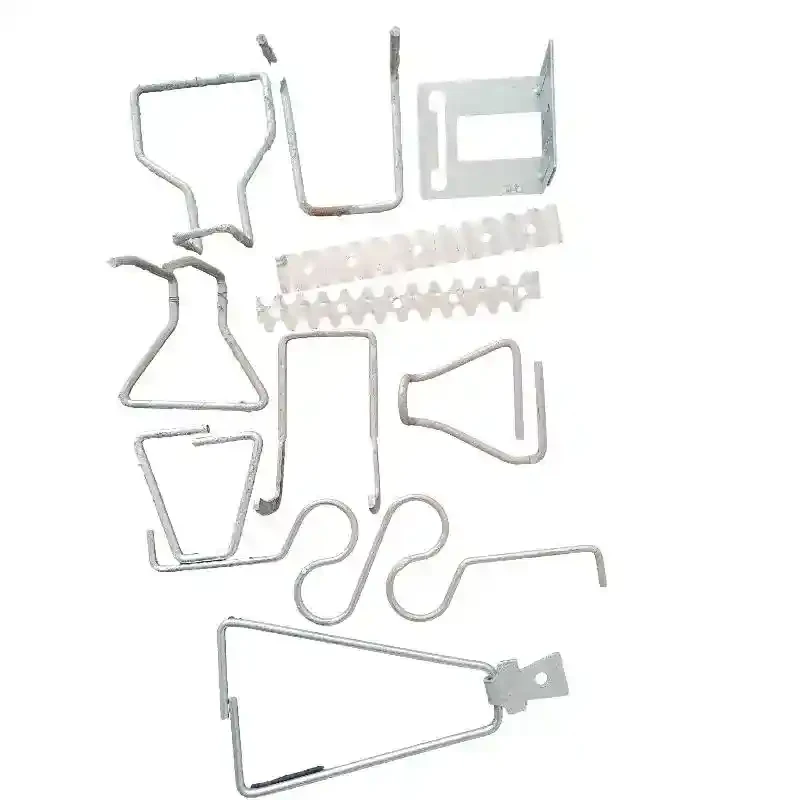
- Mobile Phone
- +8613931874955
- sales@cntcmetal.com
lightweight compression springs
Understanding Lightweight Compression Springs An Essential Component in Modern Engineering
Compression springs are vital components in various mechanical systems, providing essential force and support in applications ranging from automotive to aerospace engineering. Among the various types of compression springs, lightweight compression springs have gained particular attention due to their durability, efficiency, and ability to reduce overall equipment weight. This article delves into the characteristics, advantages, and applications of lightweight compression springs, highlighting their importance in modern engineering.
What are Lightweight Compression Springs?
Lightweight compression springs are designed to compress and store energy. They are typically made from high-strength steel alloys, titanium, or composite materials, allowing them to maintain structural integrity while minimizing weight. This characteristic is particularly beneficial in industries where weight reduction is critical, such as in aerospace and automotive applications.
These springs work on the principle of storing mechanical energy when compressed. When a load is applied to the spring, it shortens, and energy is stored in the spring’s coils. Once the load is removed, the spring returns to its original shape, releasing the stored energy. Lightweight compression springs can be finely tuned in terms of spring rate, which is a measure of the stiffness of the spring, and can be customized for specific applications.
Advantages of Lightweight Compression Springs
1. Weight Reduction One of the primary advantages of lightweight compression springs is their reduced weight compared to traditional springs. This is particularly important in industries where every gram counts, enabling manufacturers to create lighter and more fuel-efficient vehicles and machinery.
2. Improved Performance Due to their construction from high-strength materials, lightweight compression springs can offer better fatigue resistance and longevity. This improvement translates to less frequent replacements, reducing maintenance costs and downtime in production processes or operations.
3. Customization These springs can be produced in various sizes, wire diameters, and coil configurations (e.g., round, square, or rectangular). This versatility allows engineers to select a spring that precisely meets their specifications for force and travel, facilitating innovation in product design.
4. Corrosion Resistance Many lightweight compression springs are crafted from materials that resist corrosion, extending their lifespan, especially in harsh environments. For example, springs used in marine applications benefit from materials that can withstand exposure to saltwater.
lightweight compression springs

5. Reduction of Inertia Lightweight springs reduce the inertia of moving components within a machine. This can lead to faster response times and improved overall system efficiency.
Applications of Lightweight Compression Springs
Lightweight compression springs are versatile components employed across various sectors
- Aerospace The aerospace industry heavily relies on lightweight components to maximize efficiency and reduce fuel consumption. Compression springs are used in landing gear systems, control surfaces, and various actuation mechanisms.
- Automotive In automobiles, lightweight compression springs are found in suspension systems, seats, and engine components, contributing to overall vehicle performance and comfort.
- Electronics Lightweight compression springs are essential in electronic devices where compactness and reliability are crucial. They are often used in keyboards, switches, and various other mechanisms that require agility and precision.
- Medical Devices In the medical field, lightweight springs are utilized in devices such as surgical instruments and diagnostic equipment, where precision and reliability are paramount.
- Consumer Products Various everyday items, such as pens and kitchen gadgets, incorporate lightweight compression springs, enhancing their functionality and user experience.
Conclusion
Lightweight compression springs represent a critical advancement in engineering, providing a perfect balance between strength and weight. Their ability to enhance performance while reducing the overall weight of products has made them indispensable in modern applications across multiple industries. As technologies continue to evolve and the demand for efficiency increases, lightweight compression springs will remain a significant component in driving innovation and improving product design. Their role in reducing material costs, enhancing longevity, and promoting sustainability will only solidify their place in the future of engineering.
share:
-
Why Sacrificial Formwork Is Redefining Underground ConstructionNewsJun.06,2025
-
The Structural Dynamics of Modern Concrete: How Snake Spacers Revolutionize Flexible ReinforcementNewsJun.06,2025
-
Snake Spacers Smart-Lock Concrete Reinforcement with Surgical PrecisionNewsJun.06,2025
-
Snake Spacers: Reinforcement Precision for Modern Concrete ProjectsNewsJun.06,2025
-
Snake Spacers Powering Concrete's Structural DNANewsJun.06,2025
-
Slither into Success: Snake Spacers' Precision Bite for Unbreakable ReinforcementNewsJun.06,2025
-
Sacrificial Formwork: Building Stronger, Faster, and Safer StructuresNewsJun.06,2025



















